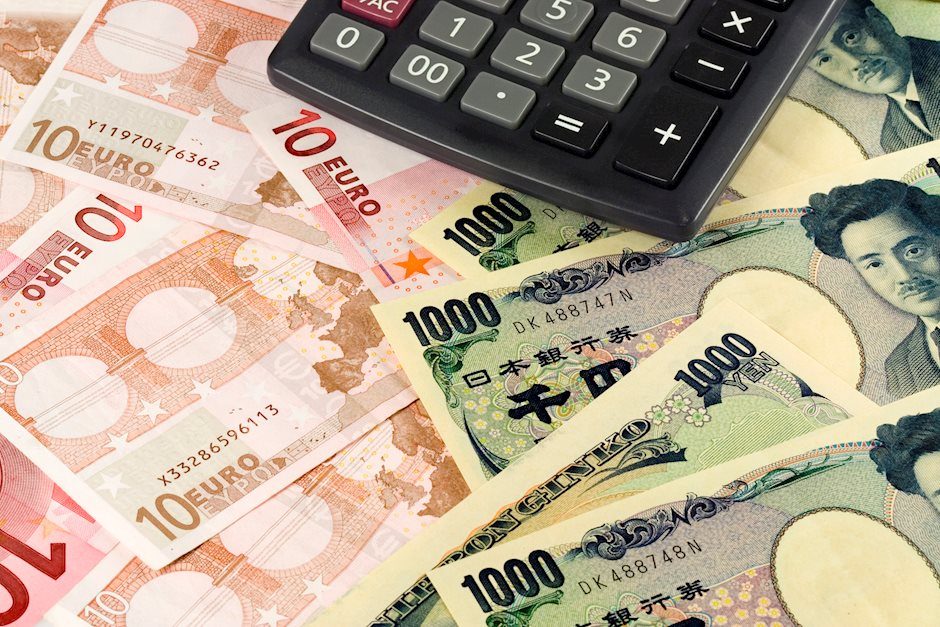EUR/JPY holds losses near 163.50 following Germany’s HICP data
- EUR/JPY remained tepid after the German Harmonized Index of Consumer Prices data released on Tuesday.
- German HICP increased by 2.4% YoY in October, up from the September’s 1.8% reading.
- Japan's Finance Minister Katsunobu Kato cautioned to take appropriate action to manage fluctuations in the FX market.

EUR/JPY has offered its recent gains from the previous session, falling to near 163.50 during the European trading hours on Tuesday. The Euro faces downward pressure as expectations grow for the European Central Bank (ECB) to adopt aggressive rate cuts. The ECB is expected to lower rates by 25 basis points in December, with market projections indicating a potential decline to 2% by June.
On the data front, Germany’s Consumer Price Index (CPI) rose to 2.0% year-over-year in October, up from September’s three-and-a-half-year low of 1.6%, marking the highest inflation rate in three months. Additionally, the Harmonized Index of Consumer Prices (HICP) increased by 2.4% YoY, up from the previous 1.8% reading, and climbed 0.4% month-over-month after a 0.1% decline in September.
On the political side, German Chancellor Olaf Scholz has expressed a willingness to move the parliamentary confidence vote forward by several weeks, possibly scheduling it before Christmas. This shift could pave the way for an early election.
The Japanese Yen (JPY) found support after new verbal interventions from Japanese officials. Finance Minister Katsunobu Kato warned that authorities are prepared to take “appropriate action” to manage sharp fluctuations in the foreign exchange market.
However, the JPY’s upward momentum is capped by uncertainty surrounding the Bank of Japan’s (BoJ) rate-hike plans. Japan’s fragile minority government is likely to complicate any moves toward tightening monetary policy. Additionally, the BoJ’s Summary of Opinions from its October meeting indicated a division among policymakers regarding further rate hikes.
Inflation FAQs
Inflation measures the rise in the price of a representative basket of goods and services. Headline inflation is usually expressed as a percentage change on a month-on-month (MoM) and year-on-year (YoY) basis. Core inflation excludes more volatile elements such as food and fuel which can fluctuate because of geopolitical and seasonal factors. Core inflation is the figure economists focus on and is the level targeted by central banks, which are mandated to keep inflation at a manageable level, usually around 2%.
The Consumer Price Index (CPI) measures the change in prices of a basket of goods and services over a period of time. It is usually expressed as a percentage change on a month-on-month (MoM) and year-on-year (YoY) basis. Core CPI is the figure targeted by central banks as it excludes volatile food and fuel inputs. When Core CPI rises above 2% it usually results in higher interest rates and vice versa when it falls below 2%. Since higher interest rates are positive for a currency, higher inflation usually results in a stronger currency. The opposite is true when inflation falls.
Although it may seem counter-intuitive, high inflation in a country pushes up the value of its currency and vice versa for lower inflation. This is because the central bank will normally raise interest rates to combat the higher inflation, which attract more global capital inflows from investors looking for a lucrative place to park their money.
Formerly, Gold was the asset investors turned to in times of high inflation because it preserved its value, and whilst investors will often still buy Gold for its safe-haven properties in times of extreme market turmoil, this is not the case most of the time. This is because when inflation is high, central banks will put up interest rates to combat it. Higher interest rates are negative for Gold because they increase the opportunity-cost of holding Gold vis-a-vis an interest-bearing asset or placing the money in a cash deposit account. On the flipside, lower inflation tends to be positive for Gold as it brings interest rates down, making the bright metal a more viable investment alternative.
Author

Akhtar Faruqui
FXStreet
Akhtar Faruqui is a Forex Analyst based in New Delhi, India. With a keen eye for market trends and a passion for dissecting complex financial dynamics, he is dedicated to delivering accurate and insightful Forex news and analysis.

















